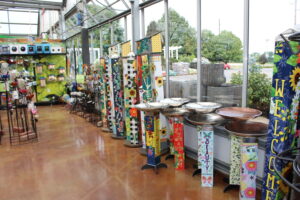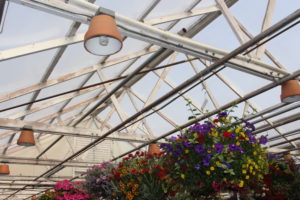Colombia Asks Americans To Buy More Flowers
American consumers buy about 60 percent of all the flowers produced in Colombia, but a floral industry executive from that country this week pleaded, “Please buy more.”
Ernest Velez said the floral production/consumption relationship between Colombia and the United States is linked not only to the economy but also to security. Velez, who chairs the Colombian Flower Exporters Association, Asocolflores, was keynoter at the International Floriculture Distinguished Lecture at Texas A&M University.
“The American consumer is enjoying Colombian flowers that many years ago were very costly to produce in some areas of the United States or were not available all year round,” Velez said. “We can provide good, quality flowers 365 days a year.”
Velez noted the worldwide floriculture industry totals about $8.5 billion annually, and the largest portion of that is cut flowers at $4 billion. Ornamental plants account for $3.5 billion, and fillers, flowers that are blended into an arrangement for the overall look, are valued at $1 billion.
The Netherlands, Colombia, Ecuador and Kenya account for 83 percent of all cut flower exports, Velez said, while Germany, United Kingdom, United States, The Netherlands and France are importers of almost three-fourths of all cut flower imports.
However, the purchase of cut flowers in the U.S. market is decreasing, Velez said, while supplies have continued to rise. That has resulted in lower prices paid to the producer.
“The oversupply of flowers requires action,” Velez said. “We need to increase the per capita consumption and grow the pie rather than fight over smaller slices. We need Americans to buy more flowers more often.”
Colombian producers have diversified into a healthy floriculture industry despite the country’s negative perception stemming from the drug trade and a Marxist guerrilla leadership, both of which lead to insecurity and instability in the marketplace, Velez said.
While it is difficult to maintain a legitimate industry in Colombia, Velez said, “competitive entrepreneurship” combined with unlimited land and labor, diverse climates and close proximity to the United States offers the chance to make a difference.
Since it began in the early 1970s, the Colombian floriculture industry has become the number one exporter of flowers to the United States and the number two worldwide, Velez said. About 1 million people in Colombia derive their incomes from floriculture and related industries, he added.
And while the industry makes a huge impact on Colombian lives, it also pumps up the U.S. economy, Velez said. “For each $1 paid to the exporting Colombian grower, that becomes $12 to the consumer at florist shop or $8 to the consumer at the supermarket in the United States,” he said. “The $700 million annual value of flowers exported from Colombia becomes $7 billion in the United States.”
For more information about the Colombian flower industry, visit www.asocolflores.org.
















 Videos
Videos





